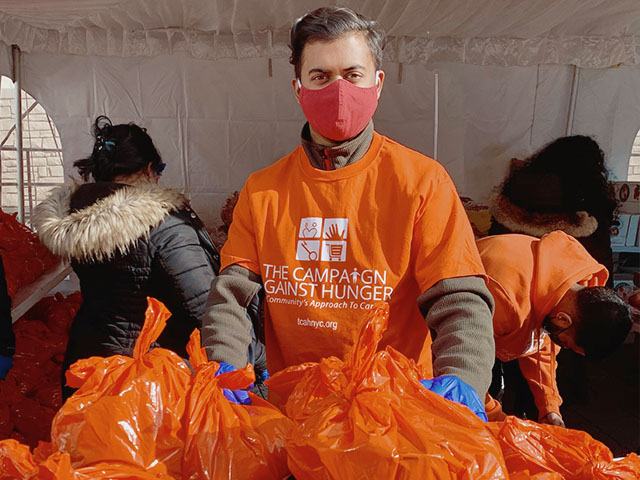New York is the second-most expensive state in the US
New York is leading the nation — in the number of local food pantries and soup kitchens, that is.
With one in six working New Yorkers now showing up on the doorsteps of food charities, a new study ranks the Empire State the second-most expensive, after Hawaii.
“Wage and salaries are not increasing here with the cost of living,” said Amria Gordon, a working Brooklyn mom with four children who visits a local food pantry.
The enormous number of New Yorkers availing themselves of “emergency food” is compatible with the surge in low-wage employment since the Great Recession ended in 2009, according to one analyst.
And the decline in the Big Apple’s official unemployment rate to 5.2 percent from 6.7 percent a year ago in part parallels the strong growth in hiring for jobs in retail and health care — sectors that have some of the lowest pay — and the corresponding drop in many higher-paying sector jobs, data notes.
Recent statistics show that the number of state residents paid low and minimum wages hovers around 4 out of 10. So, as the low-paying jobs economy flourishes, the lines for emergency food stretch around the block.
“While our research is not deep enough to be correlated directly, it is certainly consistent with the kind of job growth in New York City — some of the highest growth is in the lowest wage sectors,” according to Triada Stampas, vice president of research and public affairs at the Food Bank for New York City.
The charity’s food program serves about 64 million free meals annually for needy New Yorkers.
Meanwhile, about 1.4 million New York City residents, or 16.2 percent of the local population, visit a food pantry or food program during the year. The majority draw low incomes, says Stampas. And 20 percent have jobs.
Gordon, a single mom, is one of the working poor.
The Bedford-Stuyvesant resident, in her late 30s, has a bachelor’s degree in psychology, and, to advance her career prospects (and potentially lift her out of poverty), she’s studying further. But it’s a hungry slog out there. Her 40-hour-plus work week, with some overtime does not pay enough to meet her basic needs, she says. She has a daytime job at the Bed-Stuy Campaign Against Hunger food pantry, and works at night with special-needs patients.
“My monthly bills exceed my income, so this saves me some money. I don’t have to worry about milk, bread and some meat,” Gordon says, explaining how she supplements her income with assistance from the BedStuy food pantry.
“About 2 ¹/₂ years ago, when I hit rock bottom, I was denied food stamps because I was told I earned too much. How is that, I ask? I can’t even pay all my bills [including rent].”
Gordon then turned to the food pantry. Today, she says, the lines have grown longer since she started going there.
She recalls her first visit to the pantry. “When I needed milk and couldn’t afford it, I started crying and so I went straight to the pantry,” she says. “They said you should not be ashamed — the pantry is here to help you.”
Not surprisingly, the GOBankingRates.com survey found that New York is borderline unaffordable for many others like Gordon who are struggling to raise a family.
Other findings from the study:
l New York families pay some of the nation’s highest housing costs, an average of $1,990 monthly for rent.
l They also pay 13 percent more for food than the national average, notwithstanding a $51,962 median income “on par” with the national median.
l Child care is costly for New York families, as much as twice or three times as much as a family pays in Mississippi.





